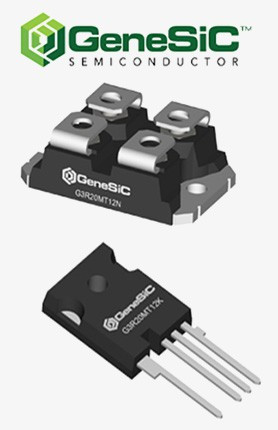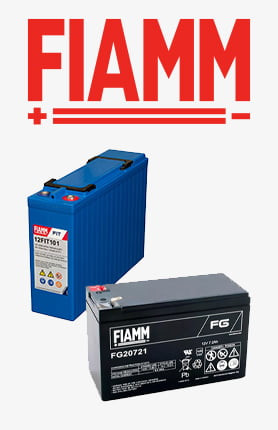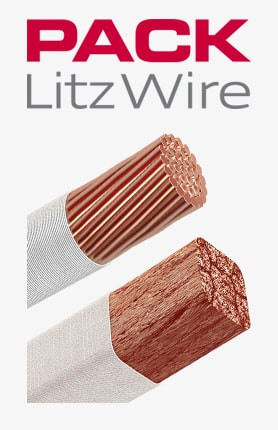Трябва да сте влезли в
-
moreX
-
Компоненти
-
-
Category
-
полупроводници
- Диоди
- Тиристори
-
Електрически изолирани модули
- Електроизолирани модули VISHAY (IR).
- Електроизолирани модули INFINEON (EUPEC).
- Електрически изолирани модули на Semikron
- Електроизолирани модули POWEREX
- Електроизолирани модули IXYS
- Електроизолирани модули от POSEICO
- Електрически изолираните модули на ABB
- Електроизолационни модули от TECHSEM
- Go to the subcategory
- Мостови токоизправители
-
Транзистори
- GeneSiC транзистори
- Mitsubishi SiC MOSFET модули
- STARPOWER SiC MOSFET модули
- ABB SiC MOSFET модули
- IGBT модули от MITSUBISHI
- Транзисторни модули MITSUBISHI
- MITSUBISHI MOSFET модули
- Транзисторни модули ABB
- IGBT модули от POWEREX
- IGBT модули - от INFINEON (EUPEC)
- Полупроводникови елементи от силициев карбид
- Go to the subcategory
- Шофьори
- Силови блокове
- Go to the subcategory
- Преобразуватели за ток и напрежение LEM
-
Пасивни компоненти (кондензатори, резистори, предпазители, филтри)
- Резистори
-
Предпазители
- Миниатюрни предпазители за електронни системи серия ABC и AGC
- Бързодействащи тръбни предпазители
- Забавени вложки с GL/GG и AM характеристики
- Изключително бързи предпазители
- Британски и американски стандартни бързодействащи предпазители
- Бързодействащи предпазители европейски стандарт
- Тягови предпазители
- Предпазители за високо напрежение
- Go to the subcategory
-
Кондензатори
- Кондензатори за двигатели
- Електролитни кондензатори
- Icel филмови кондензатори
- Силови кондензатори
- Кондензатори за постояннотокови вериги
- Кондензатори за компенсация на мощността
- Кондензатори за високо напрежение
- Кондензатори за индукционно нагряване
- Импулсни кондензатори
- DC LINK кондензатори
- Кондензатори за AC/DC вериги
- Go to the subcategory
- Филтри против смущения
- Суперкондензатори
- Защита от пренапрежение
- Разкриващи емисионни филтри TEMPEST
- Защита от пренапрежение
- Go to the subcategory
-
Релета и контактори
- Теория на релетата и контакторите
- AC 3-фазни твърдотелни релета
- DC твърдотелни релета
- Регулатори, системи за управление и аксесоари
- Мек старт и реверсивни контактори
- Електромеханични релета
- Контактори
- Ротационни превключватели
-
Еднофазни AC твърдотелни релета
- Еднофазни променливотокови полупроводникови релета Серия 1 | D2425 | D2450
- Еднофазни AC полупроводникови релета CWA и CWD серия
- Еднофазни AC полупроводникови релета серии CMRA и CMRD
- Еднофазни AC твърдотелни релета PS серия
- AC твърдотелни релета двойни и четворни серии D24 D, TD24 Q, H12D48 D
- Еднофазни полупроводникови релета от серия GN
- Еднофазни променливотокови твърдотелни релета серия CKR
- Монофазни AC релета за DIN шина ERDA и ERAA СЕРИЯ
- Монофазни AC релета за ток 150А
- Двойни твърдотелни релета, интегрирани с радиатор на DIN шина
- Go to the subcategory
- AC еднофазни печатни твърдотелни релета
- Интерфейсни релета
- Go to the subcategory
- Ядра и други индуктивни компоненти
- Радиатори, Варистори, Термична защита
- Фенове
- Климатик, Аксесоари за табла, Охладители
-
Батерии, зарядни устройства, буферни захранвания и преобразуватели
- Батерии, зарядни устройства - теоретично описание
- Литиево-йонни батерии. Персонализирани батерии. Система за управление на батерията (BMS)
- Батерии
- Зарядни за батерии и аксесоари
- UPS и буферни захранвания
- Конвертори и аксесоари за фотоволтаици
- Съхранение на енергия
- Водородни горивни клетки
- Литиево-йонни клетки
- Go to the subcategory
-
Автоматизация
- Подемници Spiralift
- Части за дронове Futaba
- Крайни изключватели, Микро ключове
- Сензори, Преобразуватели
- Пирометри
- Броячи, Релета за време, Панелни измервателни уреди
- Индустриална защитна екипировка
- Светлинни и звукови сигнали
- Термовизионна камера
- LED дисплеи
- Бутони и превключватели
- Go to the subcategory
-
Кабели, Litz проводници, Тръбопроводи, Гъвкави връзки
- Проводници
- Кабелни щуцери и ръкави
- лица
-
Кабели за специални приложения
- Удължителни и компенсаторни кабели
- Кабели за термодвойки
- Свързващи кабели за PT сензори
- Многожилни кабели темп. -60°C до +1400°C
- Кабели средно напрежение SILICOUL
- Кабели за запалване
- Нагревателни кабели
- Едножилни кабели темп. -60°C до +450°C
- Железопътни проводници
- Нагревателни кабели в Ex
- Кабели за отбранителната промишленост
- Go to the subcategory
- тениски
-
Плитки
- Плоски плитки
- Кръгли плитки
- Много гъвкави плитки - плоски
- Много гъвкави плитки - кръгли
- Цилиндрични медни оплетки
- Медни цилиндрични оплетки и капаци
- Гъвкави ленти за заземяване
- Цилиндрични оплетки от поцинкована и неръждаема стомана
- Медни оплетки с PVC изолация - температура до 85 градуса
- Плоски алуминиеви оплетки
- Комплект за свързване - оплетки и тръби
- Go to the subcategory
- Тягово оборудване
- Накрайници за кабели
- Изолирани гъвкави релси
- Многослойни гъвкави шини
- Системи за управление на кабели
- Go to the subcategory
- View all categories
-
полупроводници
-
-
- Suppliers
-
Applications
- CNC машини
- DC и AC задвижвания (инвертори)
- Двигатели и трансформатори
- Енергетика
- Енергийни банки
- Заваръчни машини и заварчици
- Захранвания (UPS) и токоизправителни системи
- Измерване и регулиране на температурата
- Изследвания и лабораторни измервания
- Индукционно нагряване
- Индустриална автоматизация
- Индустриална защитна екипировка
- Компоненти за зони с опасност от експлозия (EX)
- Машини за сушене и обработка на дървесина
- Машини за термоформоване на пластмаси
- Минно дело, металургия и леярство
- Оборудване за разпределителни и контролни шкафове
- ОВК автоматизация
- Печат
- Трамвайна и железопътна тяга
-
Инсталация
-
-
Индуктори
-
-
Индукционни устройства
-
-
Обслужване
-
- Contact
- Zobacz wszystkie kategorie
Basics of Electromagnetic Compatibility: What Is It and Why Is It Important? 3 of 8

Basics of Electromagnetic Compatibility: What Is It and Why Is It Important? 3 of 8
Overview of Key Regulations on Electromagnetic Compatibility (EMC), such as EMC standards in the European Union:
Electromagnetic Compatibility (EMC) is an essential aspect of designing, manufacturing, and using electronic devices. To ensure consistent standards and minimize electromagnetic interference within the European Union, a series of regulations concerning EMC have been introduced. Here is an overview of the main regulations and EMC standards in the European Union:
- EMC Directive (2014/30/EU): The EMC Directive provides the legal framework for Electromagnetic Compatibility in the European Union. It establishes basic requirements for the emission and immunity of electromagnetic disturbances for electronic devices and systems. The EMC Directive applies to both device manufacturers and users, regulating issues related to CE marking and declaration of conformity.
- EMC Standards: Under the EMC Directive, the European Commission has adopted a series of technical standards that describe testing methods and compliance criteria for EMC requirements. Examples of these standards include EN 55032 (radiated emissions), EN 55035 (conducted emissions), EN 61000-3-2 (harmonics), and EN 61000-3-3 (flicker and voltage fluctuations). These standards serve as a technical basis for the industry and enable manufacturers to meet EMC requirements.
- CE Certification: CE marking is required for many types of electronic devices within the European Union. The marking signifies that the device complies with the applicable EMC requirements and other safety aspects. CE certification confirms compliance with relevant regulations and standards, enabling the free movement of the device within the EU market.
- European Committee for Standardization (CEN): CEN is an organization responsible for developing technical standards across various fields. In the field of EMC, CEN develops and publishes European standards applicable in all EU member states. These standards serve as a reference for the industry and ensure coherence and compliance in the field of EMC.
By implementing these regulations and EMC standards within the European Union, manufacturers of electronic devices have clear guidelines regarding the minimum requirements related to Electromagnetic Compatibility. These actions contribute to market consistency, minimize electromagnetic interference, and protect users from potential risks associated with electromagnetic disturbances.
Requirements and standards for Electromagnetic Compatibility (EMC) vary depending on the industry and sector in which electronic devices are used.
The introduced regulations and standards aim to adapt EMC requirements to the specific conditions and risks present in different sectors. Here are a few examples of EMC requirements and standards for various industries:

Energy Industry
In the energy sector, where electrical devices such as transformer stations, photovoltaic panels, and generators are used, specific EMC standards are required. The aim is to minimize the impact of electromagnetic interference on power grids and ensure the reliability and durability of devices in challenging operating conditions, such as surges or conducted disturbances.

Medical Industry
In the medical sector, where medical devices such as diagnostic equipment, patient monitors, MRI machines, and defibrillators are used, high EMC standards are required. EMC requirements in this industry aim to ensure the safety of patients and medical personnel, minimize the risk of interference with the operation of medical devices, and ensure proper functioning of these devices in hospital environments.

Automotive Industry
In the automotive sector, where electronic devices are used in vehicles, such as engine control systems, navigation systems, and safety systems, strict EMC requirements apply. EMC standards in this sector aim to ensure the reliable operation of automotive electronics and minimize the impact of electromagnetic interference on safety-critical systems and driving comfort.

Aerospace Industry
In the aerospace industry, where electronic devices are used in airplanes, satellites, and other aerospace systems, EMC requirements are particularly stringent. Safety, reliability, and avoidance of electromagnetic interference are crucial in these sectors. EMC standards in this area aim to minimize the risk of interference that could affect the operation of navigation, communication, and radar systems.
It is important for manufacturers and users of electronic devices in specific industries to be aware of and adhere to specific EMC requirements for their sectors. Understanding these requirements and applying appropriate EMC norms and standards contributes to ensuring the safe, reliable, and compliant operation of electronic devices in various industries.
The consequences of not meeting Electromagnetic Compatibility (EMC) requirements can be serious and have a negative impact on electronic devices, users, and the environment.
Electromagnetic Interference: Failure to meet EMC requirements can lead to mutual interference between electronic devices. This can result in device instability, errors in data transmission, system failures, or even complete device shutdown.
Data Loss: Improper device operation caused by electromagnetic interference can lead to data loss. In the case of information systems, malfunctioning can result in the loss of critical information, which can have significant business and financial consequences.
Safety: Electromagnetic interference can pose a safety hazard. In sectors such as medicine, defense, or transportation, failure to meet EMC requirements can disrupt critical system operation, which in turn can jeopardize the health, life, or safety of users.
Violation of Regulations and Standards: Failure to meet EMC requirements can result in violations of industry or regional regulations and standards. This can entail legal consequences such as fines, sanctions, or bans on introducing devices to the market.
Loss of Customer Trust: If electronic devices fail to meet EMC requirements and frequently experience malfunctions or disturbances, it can lead to a loss of customer trust. Negative experiences related to improper device operation can impact the reputation of the manufacturer, resulting in the loss of customers and financial losses.
Therefore, meeting EMC requirements is extremely important. By applying appropriate design, testing, and device protection techniques, it is possible to minimize the risk of electromagnetic interference and ensure reliability, durability, and compliance with regulations. Businesses and manufacturers should be aware of the potential consequences of not meeting EMC requirements and strive for the highest quality and standards compliance to protect their interests and user safety.
Related posts
 Now available – DC/DC converters from PREMIUM
Now available – DC/DC converters from PREMIUM
 New release in DACPOL lighting for lathes – Kira covers
New release in DACPOL lighting for lathes – Kira covers




Leave a comment